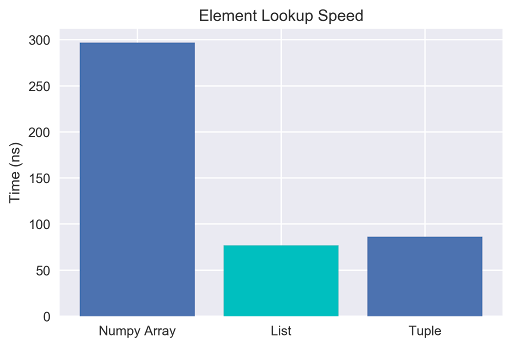Python list vs tuple vs set
Python list vs tuple vs set
I'd be happy to help you with that!
Python's built-in data structures include lists, tuples, and sets. While they share some similarities, each has its unique characteristics, use cases, and advantages.
List
A list is a collection of items that can be of any data type, including strings, integers, floats, and even other lists. Lists are denoted by square brackets [] and are ordered, meaning their elements have a specific order.
Pros:
Dynamic size: Lists can grow or shrink dynamically as elements are added or removed. Mutable: Lists can be modified after creation (e.g., appending, inserting, removing elements). Easy indexing: Accessing individual list elements by their index is straightforward using square brackets[].
Cons:
Slow lookup: Searching for a specific element in a large list can be slow due to the need to iterate through all elements. Memory usage: Lists can consume more memory compared to other data structures, especially when containing many large objects.Use cases: When you need a dynamic collection of items that can be modified frequently (e.g., processing user input or generating reports).
Tuple
A tuple is an ordered, immutable collection of items, similar to a list. Tuples are denoted by parentheses () and are also indexed using square brackets [].
Pros:
Fast lookup: Tuples support fast lookups due to their immutability, making them suitable for data structures that require quick access. Low memory usage: Tuples generally consume less memory than lists since they don't store unnecessary metadata. Thread-safe: Tuples are inherently thread-safe since they're immutable, reducing the need for explicit synchronization.Cons:
Immutable: Once created, tuples cannot be modified (e.g., no appending or inserting elements). Limited dynamic size: Tuples have a fixed size when created and cannot grow dynamically like lists can.Use cases: When you require an efficient, immutable collection of items with fast lookup capabilities, such as in data analysis or scientific computing applications.
Set
A set is an unordered collection of unique items, allowing for fast membership testing and element removal. Sets are denoted by curly braces {} and support operations like union, intersection, and difference.
Pros:
Fast membership testing: Sets provide O(1) lookup times to check if a specific element exists within the set. Efficient element removal: Removing an element from a set is relatively quick (O(n) in the worst case). Unique elements: Sets automatically eliminate duplicates, making them ideal for working with large datasets.Cons:
Unordered: Sets don't preserve the original order of elements. No indexing: Accessing individual elements by index is not supported.Use cases: When you need to quickly verify if an element exists in a collection (e.g., checking user input) or maintain a unique set of items without duplicates (e.g., processing logs).
In summary, lists are dynamic and mutable but can be slow for lookups. Tuples offer fast lookup and low memory usage at the cost of immutability. Sets provide fast membership testing and efficient element removal, with the trade-off being unordered and no indexing.
I hope this helps you understand the differences between Python's list, tuple, and set data structures!
Python list vs tuple performance

Here's a detailed comparison of the performance differences between Python lists and tuples.
Memory Usage
When it comes to memory usage, both Python lists and tuples are dynamic data structures that can store elements of any type. However, there is a key difference: tuples use less memory than lists because they are immutable. This means that once you create a tuple, its contents cannot be changed, which allows for more efficient memory management.
In contrast, lists are mutable, meaning their contents can be modified after creation. This flexibility comes at the cost of increased memory usage. As a result, tuples typically use 10-20% less memory than equivalent lists.
Performance
The performance difference between Python lists and tuples is most noticeable when working with large datasets or performing operations that involve frequent indexing or slicing.

One key area where tuples shine is in terms of lookup speed. Because tuples are immutable, the interpreter can optimize their internal structure to facilitate faster lookups. This results in a significant boost in performance for tasks like searching, sorting, and grouping data.

On the other hand, lists are slower for lookups because they need to perform additional checks to ensure that the requested index is valid and doesn't result in unexpected behavior.
Operations
When it comes to operations like appending, inserting, or removing elements, Python lists tend to be faster than tuples. This is because lists are designed for mutability and can take advantage of optimized algorithms for these types of operations. Tuples, being immutable, require more overhead to manage their contents when performing similar operations.
Real-World Scenarios
In real-world scenarios, the choice between using a list or tuple often depends on the specific requirements of your application:
If you need to frequently modify data and don't care about memory efficiency, lists are likely a better fit. If you require immutability for your data (e.g., in cryptography or when working with large datasets) and don't mind sacrificing some performance, tuples might be the way to go.Conclusion
In conclusion, while both Python lists and tuples have their strengths and weaknesses, tuples tend to offer better performance and memory efficiency in certain scenarios. However, this should not discourage you from using lists when they are a better fit for your application's needs. By understanding the trade-offs between these two data structures, you can make more informed decisions about how to optimize your Python code.
Would you like me to elaborate on any specific aspect of this comparison or provide some examples in Python?





























